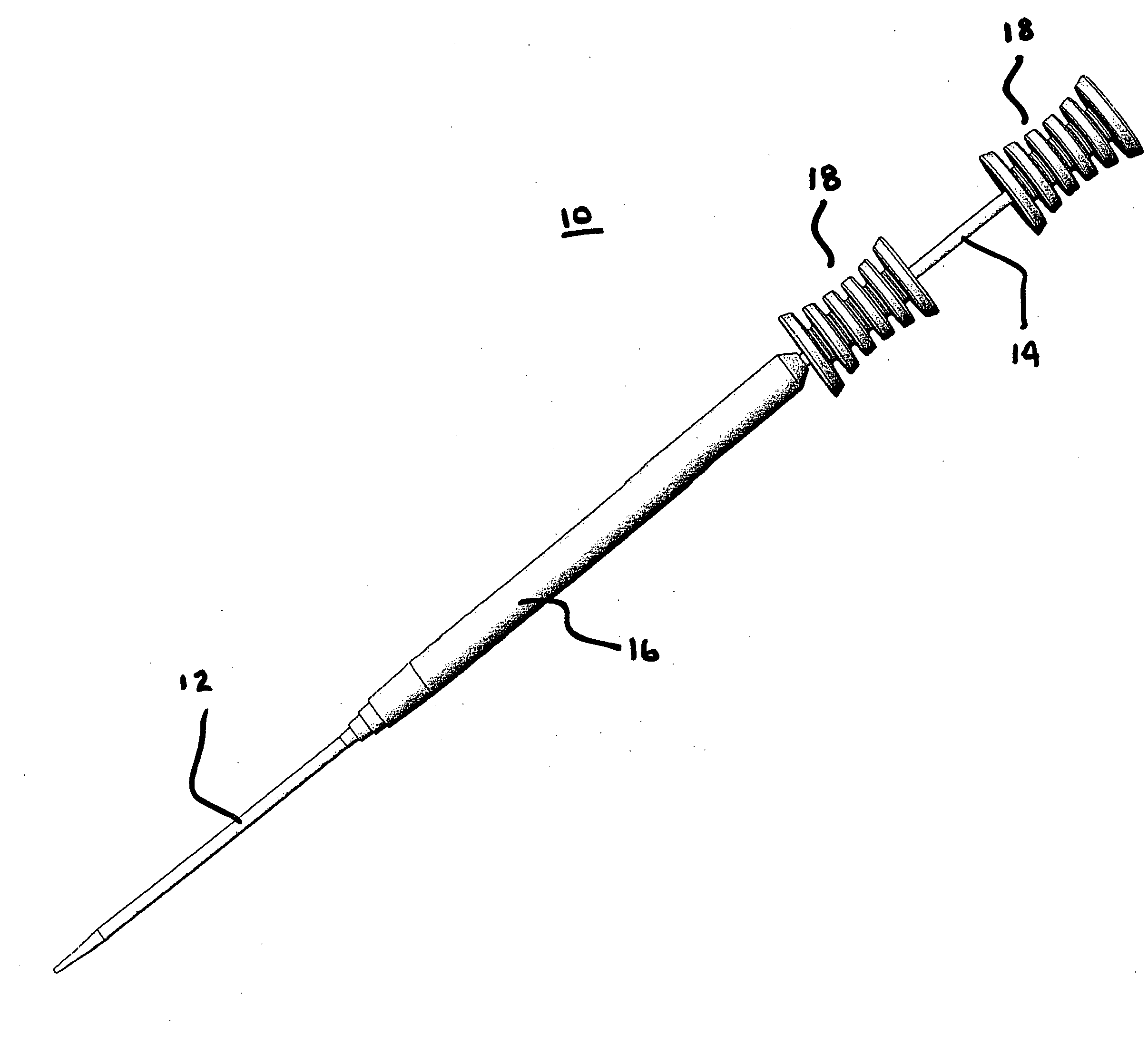Percutaneous dilation apparatus
a dilation apparatus and percutaneous technology, applied in the field of medical devices, can solve the problems of increasing the number of dilation exchanges, affecting the effect of dilation, and affecting the effect of dilation, and achieve the effect of enlargement of the penetration
- Summary
- Abstract
- Description
- Claims
- Application Information
AI Technical Summary
Benefits of technology
Problems solved by technology
Method used
Image
Examples
Embodiment Construction
[0020] The present invention is useful for forming and enlarging percutaneous penetrations to a variety of target locations within a patient's body for a multiplicity of purposes. The initial penetration will be very small, usually being below about 7 F, more usually being below about 3 F, and frequently being below about 20 GA (gauge; 0.035 in). The penetration will subsequently be enlarged to a desired final size, usually having a final diameter in the range from about 10 French (F) to about 30 F, typically being from about 12 F to 28 F, and usually being from about 14 F to 24 F, with the present invention being particularly useful for the formation of larger diameter penetrations.
[0021] The purpose of the penetration may be for drainage, intraorgan drug administration, perfusion, aspiration, or the like, but will usually be for the introduction of a relatively large surgical instrument or working catheter, such as those intended for least invasive surgical procedures. Such proce...
PUM
 Login to View More
Login to View More Abstract
Description
Claims
Application Information
 Login to View More
Login to View More - R&D
- Intellectual Property
- Life Sciences
- Materials
- Tech Scout
- Unparalleled Data Quality
- Higher Quality Content
- 60% Fewer Hallucinations
Browse by: Latest US Patents, China's latest patents, Technical Efficacy Thesaurus, Application Domain, Technology Topic, Popular Technical Reports.
© 2025 PatSnap. All rights reserved.Legal|Privacy policy|Modern Slavery Act Transparency Statement|Sitemap|About US| Contact US: help@patsnap.com



